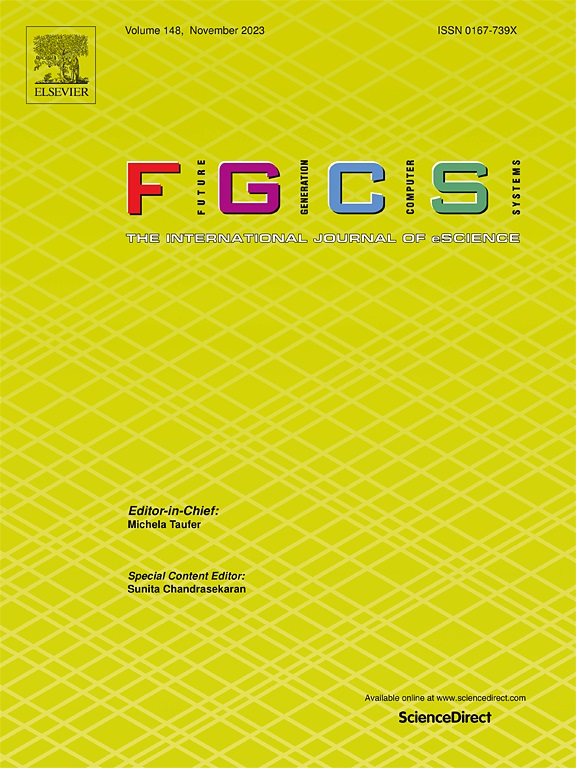基于复杂网络知识的现场可编程门阵列路由拥塞预测
IF 6.2
2区 计算机科学
Q1 COMPUTER SCIENCE, THEORY & METHODS
Future Generation Computer Systems-The International Journal of Escience
Pub Date : 2025-03-01
DOI:10.1016/j.future.2025.107776
引用次数: 0
摘要
由于FPGA(现场可编程门阵列)设计的空前复杂性,导致路由拥塞的发生。在早期阶段准确预测当今fpga的拥塞有助于减少后期设计和优化的负担。本文提出了一种创新的基于复杂网络知识的方法来预测FPGA在布局阶段的路由拥塞。根据预先感知到的特征的重要性,将与路由拥塞高度相关的复杂网络特征和电路特征映射到RGB(红-绿-蓝)图像中,以馈送给所提出的模型。引入了带有补丁转换的补丁EDM(阐明基于扩散的生成模型的设计空间),以关注最重要的特征。实验结果表明,该方法取得了显著的成就,平均SSIM(结构相似性)为85.01%,PSNR(峰值信噪比)为27.85 dB(分贝),NRMS(归一化均方根)为12.91%,PIX(像素精度)为18.73%,优于最近最先进的模型,如pix2pix, pix2pixHD, FCN(全卷积网络)和Lay-Net,关键指标SSIM分别提高了4.87%,2.83%,5.77%和18.56%。消融验证突出了复杂网络特征在路由拥塞预测中的有效性。该结果能够在早期设计阶段识别潜在的路由拥塞,促进后续可处理路由问题的优化解决方案。本文章由计算机程序翻译,如有差异,请以英文原文为准。
Complex network knowledge-based field programmable gate arrays routing congestion prediction
Routing congestion occurs due to the unprecedented complexity of FPGA (field programmable gate array) designs. Accurately predicting the congestion of today’s FPGAs at an early stage helps to reduce the burden of later design and optimization. This paper proposes an innovative complex network knowledge-based approach to predict FPGA routing congestion during the placement stage. The complex network features and circuit features highly correlated with routing congestion are mapped into RGB (red-green-blue) images according to the pre-perceived importance of the features to feed to the proposed model. A patched EDM (elucidating the design space of a diffusion-based generative model) with a patch transformation is introduced to focus on the most significant features.
Experimental results show the remarkable achievements of the approach with an average SSIM (structural similarity) of 85.01 %, PSNR (peak signal-to-noise Ratio) of 27.85 dB (decibels), NRMS (normalized root mean square) of 12.91 %, and PIX (pixel accuracy) of 18.73 %, outperforming the recent state-of-the-art models like pix2pix, pix2pixHD, FCN (fully convolutional networks), and Lay-Net, improved by 4.87 %, 2.83 %, 5.77 %, and 18.56 % on key metric SSIM, respectively. The ablation validation highlights the efficiency of complex network features in routing congestion prediction. The outcome enables the identification of potential routing congestion in early design stages, facilitating the optimization solution of subsequent tractable routing problems.
求助全文
通过发布文献求助,成功后即可免费获取论文全文。
去求助
来源期刊
CiteScore
19.90
自引率
2.70%
发文量
376
审稿时长
10.6 months
期刊介绍:
Computing infrastructures and systems are constantly evolving, resulting in increasingly complex and collaborative scientific applications. To cope with these advancements, there is a growing need for collaborative tools that can effectively map, control, and execute these applications.
Furthermore, with the explosion of Big Data, there is a requirement for innovative methods and infrastructures to collect, analyze, and derive meaningful insights from the vast amount of data generated. This necessitates the integration of computational and storage capabilities, databases, sensors, and human collaboration.
Future Generation Computer Systems aims to pioneer advancements in distributed systems, collaborative environments, high-performance computing, and Big Data analytics. It strives to stay at the forefront of developments in grids, clouds, and the Internet of Things (IoT) to effectively address the challenges posed by these wide-area, fully distributed sensing and computing systems.

 求助内容:
求助内容: 应助结果提醒方式:
应助结果提醒方式:


